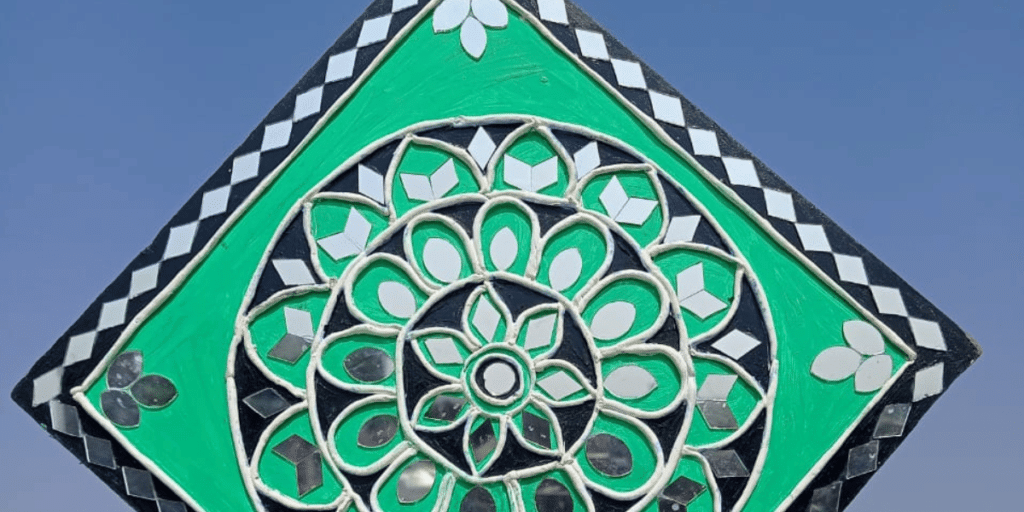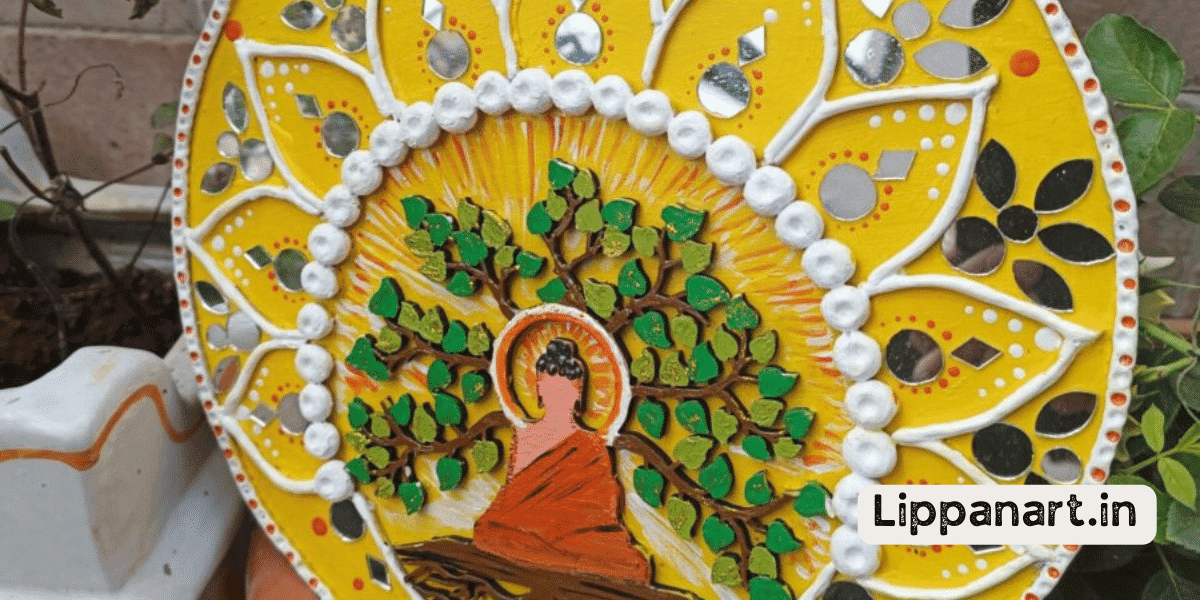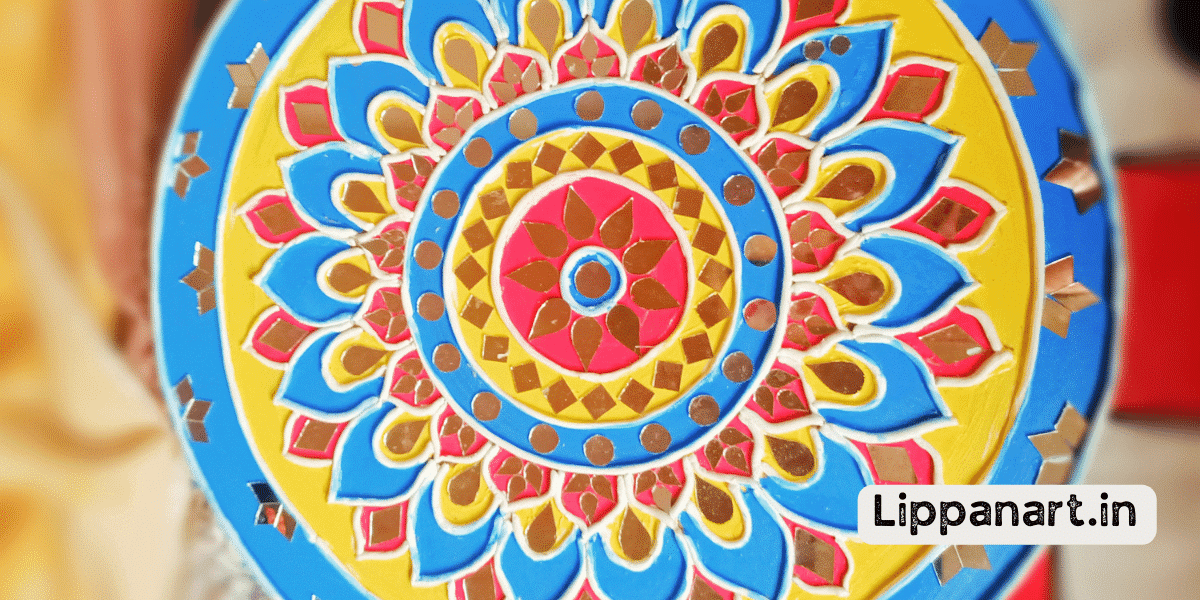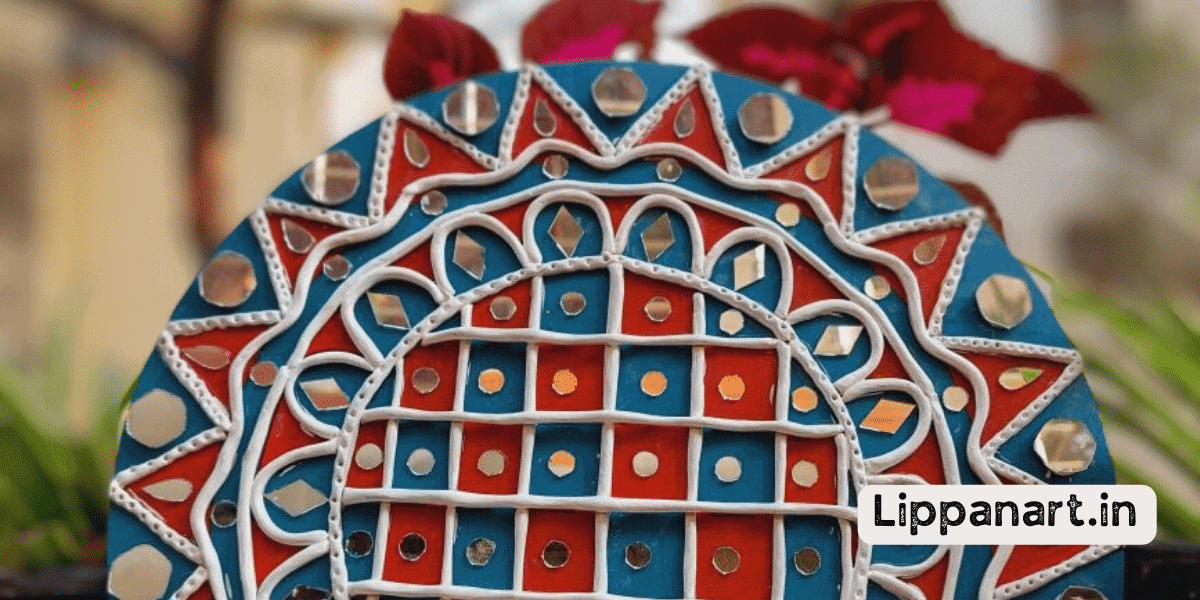Are you an artist looking to add a unique touch to your work? Have you considered using clay powder in lippan art?
While this ancient art form is beautiful and complex, there are some common issues you should be aware of before you get started. From colour variation to clumping and smudging, let’s look at the potential pitfalls of clay powder lippan art.
Key Takeaways
- Color and texture issues in lippan art can arise from clay type, mixing techniques, and sealant application.
- Uneven coating, cracking, smudging, and dusting are common application problems when using clay powder in lippan art.
- Clumping and shrinking can occur in clay powder but can be prevented through proper dissolution and mixing techniques.
- Blending difficulties and lack of adhesion can be addressed by monitoring drying time, preparing mould surfaces, and sealing the clay after drying.
Colour Variation
You’ll often find that the colour of your clay powder varies greatly. This becomes an issue when using clay powder in lippan art due to the difficulties in matching the colours. Several factors, such as the type of clay or the drying, mixing, and sealing techniques used, can cause the variation.
One way to help reduce colour variation is to pay attention to powder storage. Since clay powder is affected by moisture, it’s important to keep it in an airtight container or a cool, dry place.
It’s also important to ensure the clay powder is completely dry before adding it to your art. Different drying techniques can also affect the colour of your clay powder. For example, air drying your clay powder may produce a lighter colour than baking it in an oven.
Lastly, you may also want to experiment with different types of clay powder to see which one works best for your project.

Texture Issues
| Hard or Crumbly clay | Sticky Consistency | Blending Techniques |
|---|---|---|
| Drying Speed | Sealant Application | Mixing Ratios |
Mixing the clay powder at the wrong ratio can cause the consistency to be too sticky, making it difficult to blend the colours. Alternatively, the clay can be too dry and crumbly, making it difficult to form. Different blending techniques can help achieve the desired texture, like adding a little bit of water or a few drops of sealant. The drying speed of the clay can also affect the texture of the lippan art. If the clay dries too quickly, it can become too hard and brittle. Applying a sealant helps slow the drying process and seal the clay, ensuring a smoother surface. Finding the right mixing ratios for the clay is key to getting the desired texture. If it’s too dry, add a little bit of water. If it’s too wet, add more of the clay powder. Experimenting with different techniques and ratios will help you find the perfect texture for your lippan art.
Uneven Coating
Due to improper mixing or inadequate tools, you may encounter uneven coating when using clay powder in lippan art. The uneven coating can lead to sticking problems, drying time inconsistencies, and adhesion issues.
To reduce the likelihood of these issues, you should try the following:
- Use a pinch technique when applying the clay powder, as this helps avoid air bubbles.
- Ensure that the tools used are high quality and suitable for the task.
- Be mindful of the drying time of the clay powder, and adjust the application time accordingly.
- Apply even pressure when spreading the clay powder to adhere properly to the surface.
Cracking
Cracking can occur when the clay powder isn’t applied correctly, and it can cause a host of issues. Clay powder is an essential part of Lippan art, and when it’s not applied properly, cracking can occur, weakening the piece and leaving unsightly stains.
Clay powder’s drying time is affected by temperature and humidity, making it difficult to achieve the desired consistency. If the clay powder is too soft, it can stick to the wall, making it difficult to remove.
It’s important to ensure the clay powder is applied correctly to avoid cracking and other issues.
- Editor’s Choice
- Best Seller
- Amazon Choice
Smudging
Incorrect application of clay powder causes smudging in Lippan art. Here are four common issues that can lead to smudging:
- Storing clay in high humidity or extreme temperatures for a long period
- Not allowing enough drying time for the clay
- Exposing the clay to too much heat
- Air humidity levels that are too high for the clay consistency
Smudging is when the clay powder isn’t applied correctly, and as a result, the artwork looks smudged and blurry. This can happen when the clay is stored in a humid environment for too long or when it isn’t allowed to dry for an adequate amount of time. You can also experience smudging when the clay is exposed to too much heat or when air humidity levels are too high for the clay’s consistency.
You should store the clay in a cool and dry place to prevent smudging. Make sure to give the clay enough drying time after application and avoid exposing it to too much heat. You should also monitor the air humidity levels and adjust the clay consistency accordingly.
With the right precautions, you can ensure that your Lippan art will turn out perfectly smudge-free every time.
Dusting
You’ll frequently find dusting an issue when using clay powder for Lippan art. Dusting occurs when the powder is disturbed, and particles become airborne, reducing the vibrancy of the artwork. To avoid this, using the correct spreading technique, air drying, and application methods is important. Additionally, a sealant can help preserve the art and keep dusting to a minimum.
When applying clay powder for Lippan art, use a soft brush and a light hand to spread the powder evenly. This will help keep the dust particles from becoming airborne. Additionally, allowing the art to air dry after applying the clay is important. This will help reduce dusting. If necessary, a blow dryer can speed up the drying process.
The application methods used for clay powder also play an important role in controlling dust. Keep the powder contained to the area of the artwork, and use a damp cloth to remove excess powder. This will help reduce dusting. Additionally, using a sealant after the art is complete will help keep dust from settling on the artwork.
Dusting can be an issue when using clay powder for Lippan art, but with the right spreading technique, air drying, and application methods, you can reduce dusting and preserve your art. Additionally, using a sealant can help protect the artwork and keep dust from settling.
Over-Wetting
You can also run into problems with over-wetting clay powder when creating Lippan art, so be sure to use just enough water for the desired effect. Excess water can cause issues such as:
- Difficulty storing clay powder: Too much moisture may cause clay to harden prematurely, making it difficult to store for later use.
- Ineffective drying techniques: Overwetting the clay will make it easier to dry properly, resulting in an uneven finish.
- Poor sealing methods: Too much water can weaken the seal, making protecting the art from air humidity difficult.
- Loss of shape: Clay that’s too wet won’t maintain its shape, resulting in a distorted finished product.
To avoid these issues, using the right amount of water when mixing the clay powder is important. Be sure to follow the recipe instructions and consider the type of clay you’re using.
Proper storage, drying techniques, sealing methods, and understanding of air humidity are all essential to maintaining the desired shape and finish of Lippan art.
Clumping
When using clay powder for Lippan art, it can often clump together, making it difficult to work with. Clumping can be caused by several factors, such as the powder’s dissolving consistency, the clay’s setting time, moisture control, pigment selection, and the binding agent used.
When the clay powder is too dry, it can clump together and become difficult to work with. To prevent this, you should ensure the powder is dissolved in water until it has a smooth consistency. You should also be mindful of the setting time of the clay you’re using; if it sets too quickly, it can form clumps before it has a chance to disperse evenly.
Moisture control is also important when it comes to avoiding clumping. If the clay is too wet, it can form clumps and become difficult to work with. Adjust the moisture level to the type of clay you’re using. The pigment selection can also affect the formation of clumps; if the pigment is too thick, it can cause clumping.
Finally, the binding agent used can also play a role in clumping. If the binding agent is too strong, it can cause the clay to clump together. Make sure to use a binding agent suitable for the type of clay you’re using.
Shrinking
When using clay powder for Lippan art, it’s important to consider that your work may shrink as it dries. Shrinking can occur if the clay powder needs to be properly mixed with the adhesive or if it needs to be dried correctly. This can lead to issues such as bubbling up, sticking together, or burning away the clay. To avoid these problems, there are four key steps you can take.
First, make sure that the clay powder and adhesive are properly mixed. This ensures that the clay has the right consistency and will dry evenly.
Second, allow adequate time for the clay to dry, but be careful not to let it dry too long. If the clay dries too quickly or slowly, it can cause shrinking or other deformations.
Third, make sure that the clay is evenly spread and thin. If the clay is too thick in some areas, it can lead to uneven drying and potential shrinking.
Finally, monitor the temperature during drying to avoid burning away of the clay. If the temperature is too high, it can cause the clay to burn and shrink.

Blending Difficulties
Sometimes, blending the clay powder and adhesive together might be difficult when creating Lippan art. Mixing ratios, drying time, sealing tips, adhesion problems, and mould preparation are all factors that can contribute to this problem.
When the clay powder and adhesive aren’t mixed correctly, it can cause a lack of adhesion and lead to cracking and crumbling of the clay once it dries. The right clay powder-to-adhesive ratio is essential for a successful blend. The wrong ratio can lead to poor adhesion or cracking when it dries. Additionally, the drying time of the clay should be monitored so that it doesn’t dry too quickly, which can cause cracking.
When preparing the mould, it’s important to ensure that all surfaces are clean and debris-free. This will help the clay adhere properly to the mould and reduce the chances of any adhesion problems. Sealing the clay when it’s dry is also important to prevent any additional cracking.
Lastly, it’s important to be mindful of the mixing ratios and drying time to avoid unwanted adhesion problems. With the right preparation and care, you can achieve the perfect blend of clay powder and adhesive and create a stunning Lippan art piece.
Conclusion
Creating beautiful lippan art with clay powder can be a challenge. From colour variations to texture issues, uneven coating to cracking, smudging to over-wetting, clumping to shrinking, and blending difficulties, many problems can arise.
However, with practice and patience, you can create stunning pieces of art that will catch the eye. You can make your dreams of artful clay creations come true with some effort!














